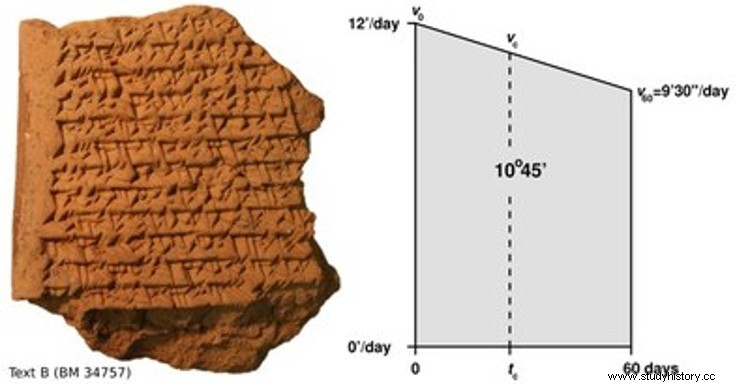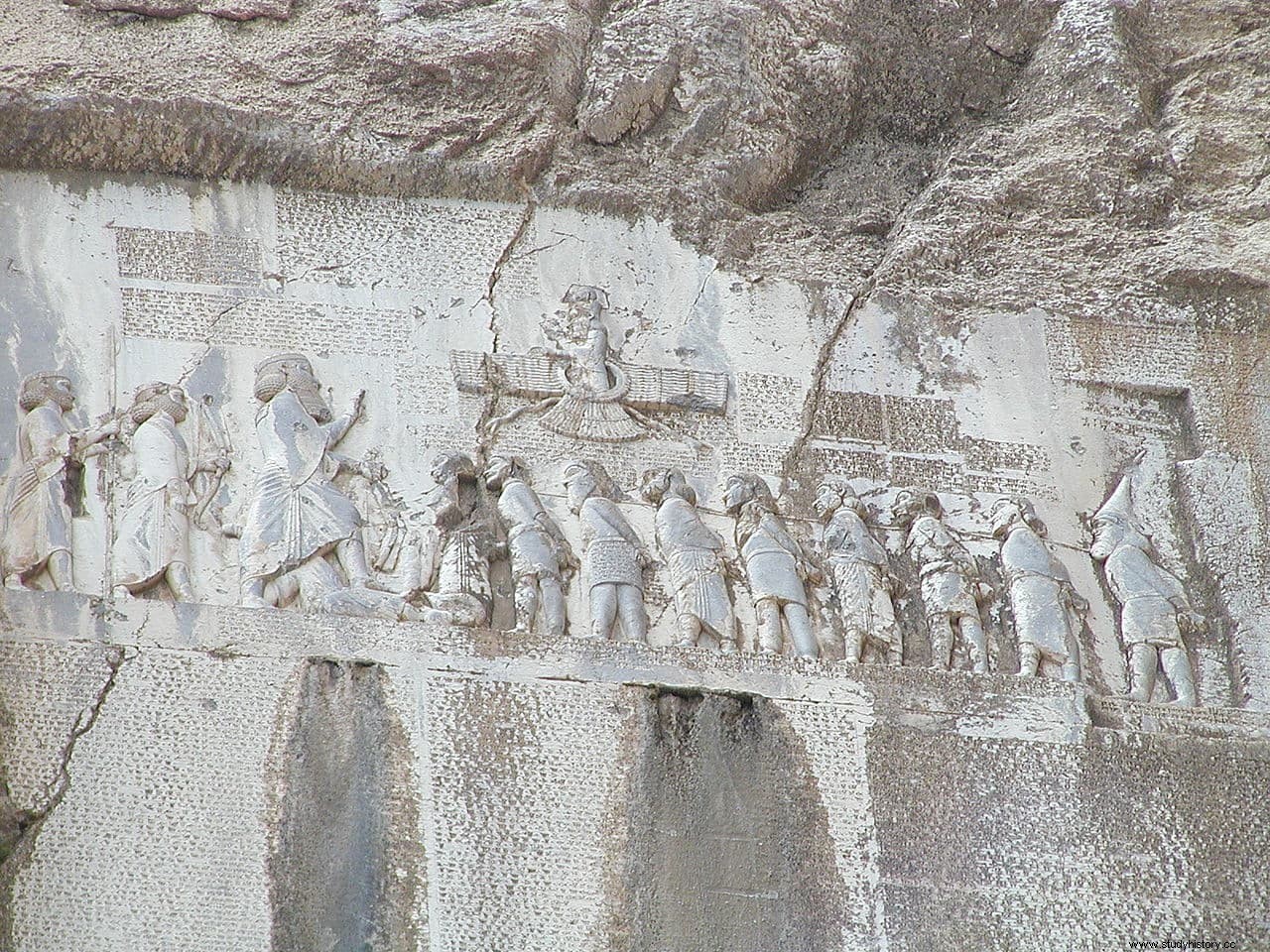One of the archaeological news that opened 2016 was the discovery in Mesopotamia from a set of clay tablets withcuneiform signs . A type of writing that, thanks to the knowledge that has been acquired over decades of discoveries, can be transcribed and, in fact, the translation has recently been published. of the latter found. Apparently one of them is a text on astronomy with calculations to predict the motion of Jupiter , which sheds more light on the knowledge about the celestial vault of the Babylonian sages .
The analysis of that Jovian orbit, published in the journal Science, was led by Professor Mathieu Ossendrijver , scientific historian at the Humboldt University of Berlin, starting from two earlier tablets dated between 350 and 50 BC. that deal with the subject and that are deposited in the British Museum since 1955. The discovery now, much better preserved, has allowed him to complete the study and highlight that its authors not only based their astronomical calculations on arithmetic, as was assumed until now, but also on geometry .
However, it is extremely curious that the tablets do not show drawings but rather they aredescribed verbatim . Specifically, they describe the area of a trapezoid and although the newly found one does not explicitly mention that figure, it does contain calculations equivalent to it. Such calculations can be applied unequivocally to the Jupiter orbital displacement based on a velocity-time relationship; the tablet explains, according to Ossendrijver, the speed of Jupiter over sixty days that can be represented in a trapezoidal figure whose area represents the distance traveled.

According to the experts, according to what the tablets say, said astronomers would have a comparable level to that of scientists millennia later; specifically those of theRenaissance period , during which the so-called Mertonian theorem was formulated in Oxford (for the Merton College to which they belonged), which was based on a similar system. At the same time, the bishop and scholastic philosopher Nicole Oresme she also did similar work in Paris in the same 14th century. Actually the ancient Greek astronomers They had also resorted to the velocity-time binomial but without applying trapezoidal bodies to prove it.
So the work, which has been published by Ossendrijver in the prestigious journalScience , continues to be impressive; even more so if one takes into account the primitive format used in Mesopotamia to write –wet clay on which incisions were made with a punch- and the rough system for it -that alphabet of geometric characters – that it had to be a difficulty when transmitting such detailed concepts.
Of course, cuneiform writing was born, grew and developed to be applied precisely in numerical matters, since its main and majority mission was to carry out administration and accounting in commercial transactions, grain counting, boat loading or tax quantification. The original pictograms that the Sumerians invented four thousand years before Christ and that were imitated by other peoples such as the Akkadians, the Elamites or the Hittites, were becoming obsolete due to the impossibility of designating abstract concepts, hence they began to incorporate symbols with phonetic value , especially in times of the rise of Akkad, which was when writing spread to other media such as stone and metal.

The cuneiform alphabet then evolved and ended up being replaced by other more practical ones, unless these are considered a kind of descendants. But there remain, as evidence, hundreds of thousands of tablets that were unearthed since the 17th century, although they could not be deciphered until the beginning of the 19th century thanks to the discovery in the Behistún Pass (Iran) from an inscription dated around 500 B.C. which presented a text in three languages , like a Mesopotamian version of the Rosetta Stone (photo below).
That trio of languages was made up of Old Persian, Babylonian and Elamite, and recounted the exploits of the Achaemenid monarch Darius the Great . The identification of the words Darius and king in Persian allowed Assyriologists, the BritishHenry Rawlinson and the Irish Edward Hincks (his work happily coincided with the discovery of the ruins of Nineveh and Ashurbanipal's archives, which were of great help), translate the rest and thus begin to unravel the mysteries of cuneiform writing. Decades later, Julius Oppert and William Henry Fox Talbot they completed the work, although a long stage was still to be covered in which very early sequences of signs were resisted; some still remain misunderstood.
The fact is that, while it is true that most of the tablets contain accounting data, it is also true that some go a little out of the norm and deal with other topics . We already see that astronomy is one of them but there is also legislation (the Code of Hammurabi would be the most famous case), maps, charts, medicine, religion, king lists, battle narratives and even cooking recipes (the oldest of History).
